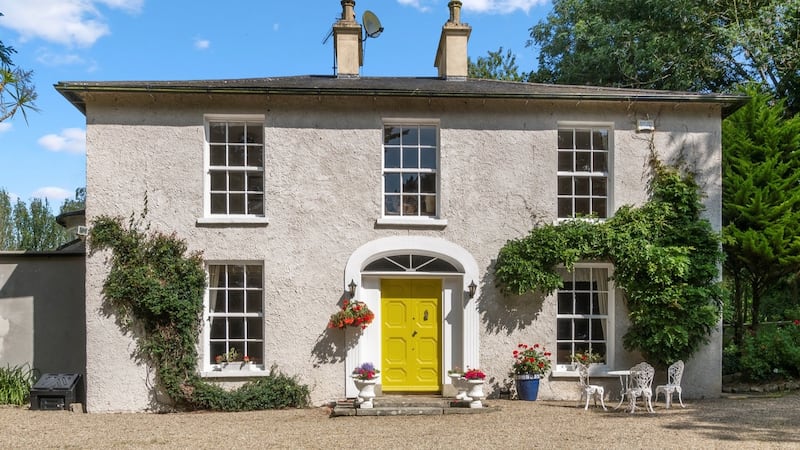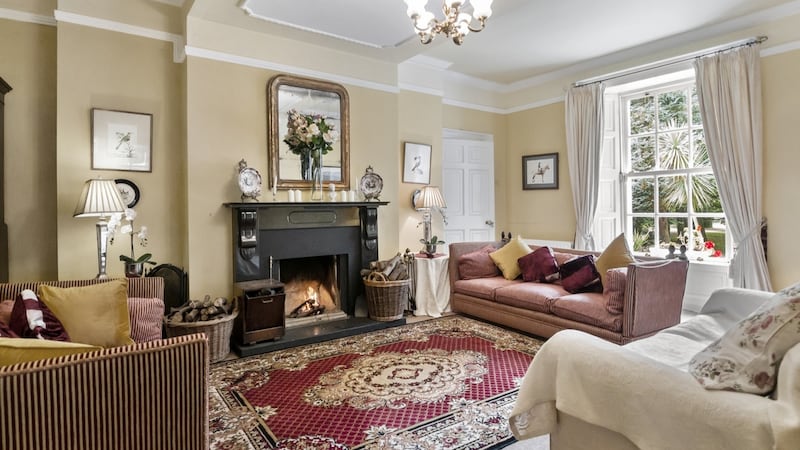If you fancy laying claim to your very own castle, then Baldwinstown House and Castle, Co Wexford, which comes with lands and stables, offers a very braggable history.
Baldwinstown House, also known as Castle House, and its ruined Norman keep, Baldwinstown Castle, are located just up from from Baldwinstown crossroads and about a mile from Bridgetown village, where there is a primary school. The complex of historic buildings, originating just after the Norman invasion, has links to the British royal family and to Charles Stewart Parnell. The house is listed in Wexford County Council’s record of protected structures.
The keep, one of the oldest in Ireland, dates to 1195 and was occupied until the Cromwellian period when, under siege, it was burned in 1649, dispossessing the resident Keating family. Their fortress and lands were divided between two Roundhead soldiers. One of them, John Swan, bought out the other and sold the land and castle within a short time to Nicholas Stafford for 40 shillings. In the early 1700s, the family built a house that adjoined the castle.
The castle has long been in ruins but it adds a lot of visual drama to the main house and is a focal point of its back garden. The stone staircase to the top is still intact.


The house too looks different from its earlier iteration. The three-bay, two-storey farmhouse was built by Rev William Stafford in 1810. The family were pillars of the Irish Parliamentary Party and entertained Charles Stewart Parnell on many occasions at the property. The house retained its connection to the Staffords of Wexford, an old Norman family, until the mid-1980s when the last in line, Maureen Stafford, died. She was notably midwife to Queen Elizabeth II, assisting in the birth of her first-born, Prince Charles.
The Ber-exempt farmhouse has been extended over time, most recently in the late 1990s, and now measures 342sq m (3,680sq ft). Its earliest part, now a self-contained, one-bedroom duplex apartment, is said to be the oldest part of the house, dating in part to the 1700s, with the Georgian additions to the front added in 1810.
In the main house, there are two fine reception rooms – near-mirror images of each other – on either side of the hall. The drawingroom is to the left and leads through to a bow-fronted sunroom and on into a diningroom. Off it is the kitchen and a separate pantry, also accessed via a back hall.


The family room opens into a large laundry room where there is a separate guest toilet. To its rear is a self-contained, one-bedroom duplex apartment with separate kitchen and livingroom.
Upstairs there are five bedrooms: four are roomy doubles, of which one is ensuite. The sizeable main bedroom includes a large dressingroom and ensuite bathroom.
The property, which is BER exempt, comes with about 17 acres of land, including mature gardens and woodlands overlooking an ornamental lake. There is also a 10-acre paddock, ideal for horses – the current owner bred sports horses – as well as a walled farm courtyard where there are four stables and other sheds and outhouses. Some of these are quite large and the owner says one would make a fine indoor arena.
The property is asking €1.35 million through Sothebys International Realty.












